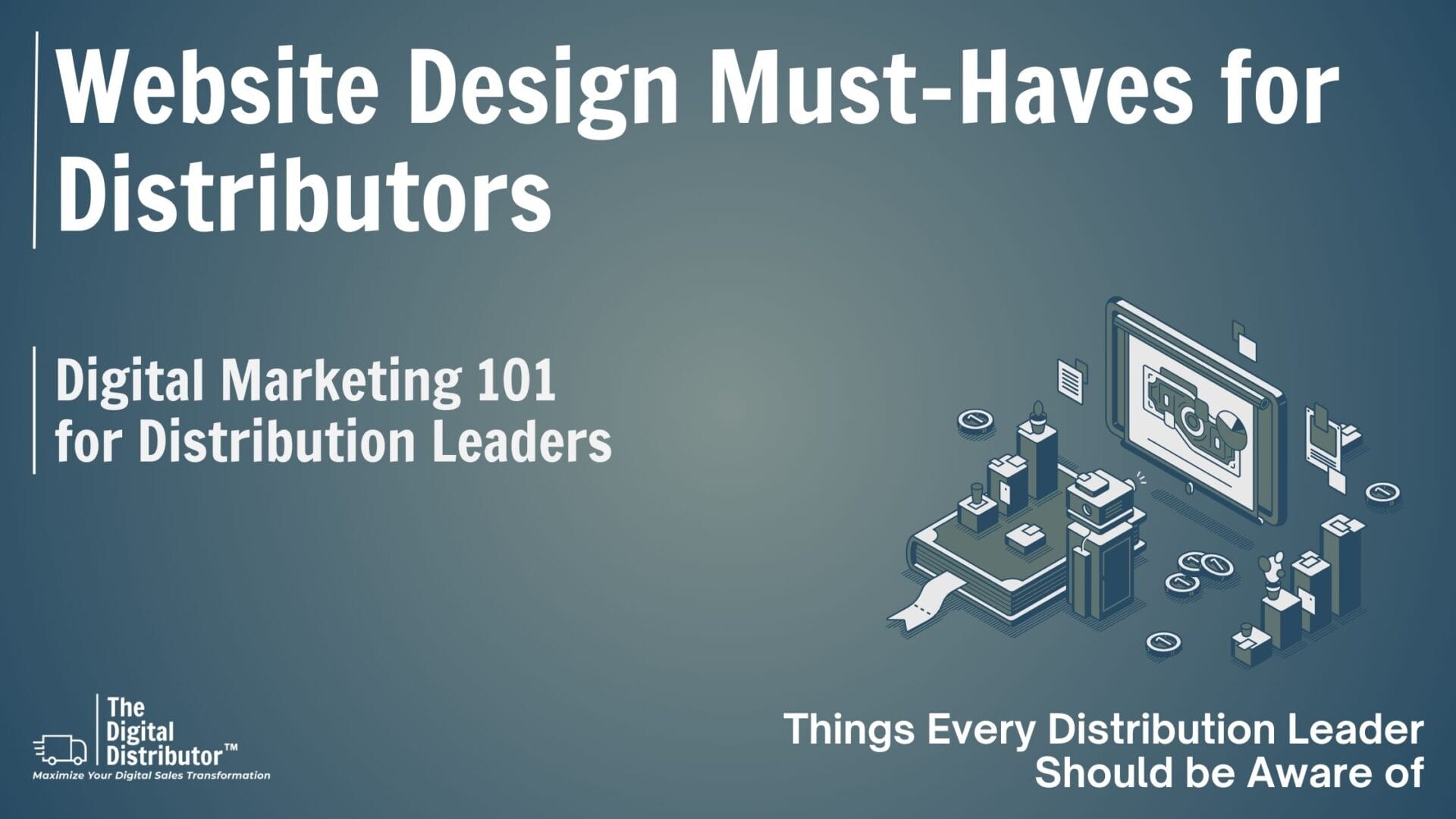Distributors and manufacturers will benefit from this “Digital Marketing 101” mini-series I put together, containing some basic elements to look for as you gauge your digital marketing capabilities. Don’t expect them all to be in place, but a small handful of any would be a great start. I hope you find the series helpful!
 It is the first impression a customer has of your business, and so, of course, you want that impression to be outstanding. A well-designed website will attract customers and keep them coming back. It should be both easy to navigate and visually appealing.
It is the first impression a customer has of your business, and so, of course, you want that impression to be outstanding. A well-designed website will attract customers and keep them coming back. It should be both easy to navigate and visually appealing.
You must also keep your website up to date with current information. An outdated website can give your customers the impression that your business is not keeping up with the times. Let’s go over some of the elements that make up a well-designed website:
Easy Navigation
All essential information on your website should be easy to find, and the site itself should be easy to use. Your visitors should be able to quickly find what they are looking for without searching through a lot of text or pages.
Visually Appealing
Design is an integral part of any website. It initially catches people’s attention and makes them want to stay on the website. For a well-designed website to be visually appealing, it must have, as mentioned above, straightforward navigation and an easy-to-use design. Additionally, your site should load quickly and not have any loading issues during a visitor’s time going from page to page.
Adherence to Effective Branding and Design Rules
Your website’s branding should reflect your company’s identity to your visitors. A good branding strategy for a website incorporates design and colors that work with your company’s brand, is not overly complicated, and adapts easily to ever-evolving website trends.
By incorporating a good branding identity onto your website, its cohesiveness will encourage visitors to spend more time learning about your brand, product, and service.
Digestible Information
There is more to the use of images and graphics than aesthetic appeal. They are much more necessary to your online content. They break up the text, add visual interest, and help readers understand complex concepts. When used effectively, they can improve readers’ understanding of your content by up to 82%.
There are many types of images and graphics you can use in your content:
Photos: Photos are a great way to show people what you’re talking about, and of course, they are very effective at breaking up text and adding visual interest.
Charts: Charts can help explain data or show trends.
Maps: Maps can illustrate points or show how something works.
Infographics: Infographics are images that combine data with visuals to help explain a concept. Infographics can be a very effective part of your content. They require a lot of creativity because, for the most part, every infographic is unique.
GIFs: GIFs are the animated images you may see on a page repeating over and over. They’re often used for humor or sometimes to illustrate a point.
Videos: Last but certainly not least, videos can add value to your site. Just about anything can be communicated effectively with a video. With today’s technology being what it is, however, it’s critically important that if you use videos on your website, they have a high production value and will successfully hold a viewer’s interest.
Proper and Consistent Formatting
Your website’s font, color, and text sizes are important for readability and accessibility. Use a font that is easy to read, with good contrast against the background color. The text should be large enough so that everyone can easily read it but not so large that it takes up too much space on the screen.
Headings and subheadings help organize the content on your page and make it easier to scan. Stick to your company’s color palette and font pairings for headings and subheadings to help them stand out from the body text. Font sizes, font types, and text alignment have different characteristics that make them easier to read on the screen. In addition, use type sizes consistent across the site for readability.
User-Friendly and Responsive
 There’s no question that a well-designed website is one of several keys to your website’s success, but what’s often forgotten is that usability is just as important. For customers to find what they’re looking for, or especially to make a purchase, make it easy to ensure all of the links, buttons, and menus work on every platform. Test your website on different browsers and devices to ensure it looks and works correctly across all platforms, including your smartphone.
There’s no question that a well-designed website is one of several keys to your website’s success, but what’s often forgotten is that usability is just as important. For customers to find what they’re looking for, or especially to make a purchase, make it easy to ensure all of the links, buttons, and menus work on every platform. Test your website on different browsers and devices to ensure it looks and works correctly across all platforms, including your smartphone.
Tailored to Your Target Audience
Do you have customers overseas? If so, your website should be optimized for international use; today, that’s easier than ever.
Internationalization is the process of making a website accessible in multiple languages. There are many ways that a website can be made accessible in different languages. The most common way is using translation plug-ins.
Conclusion
In conclusion, use the tips in this article to ensure you have a strong, attractive, and functional website. Doing so is imperative if your goal is to stand out from your competition. Your website must keep your target audience in mind and be intuitive and easy to navigate if you want buyers to return.
YOU’RE INVITED TO …
Learn more about The Digital Distributor Program — let’s schedule a time to chat!
Also, check out my forthcoming book, The Digital Distributor: Six Steps to Accelerate Sales! It contains everything you need to ensure the best possible ROI on your digital transformation.
Click here to download a free copy of Chapter One!

